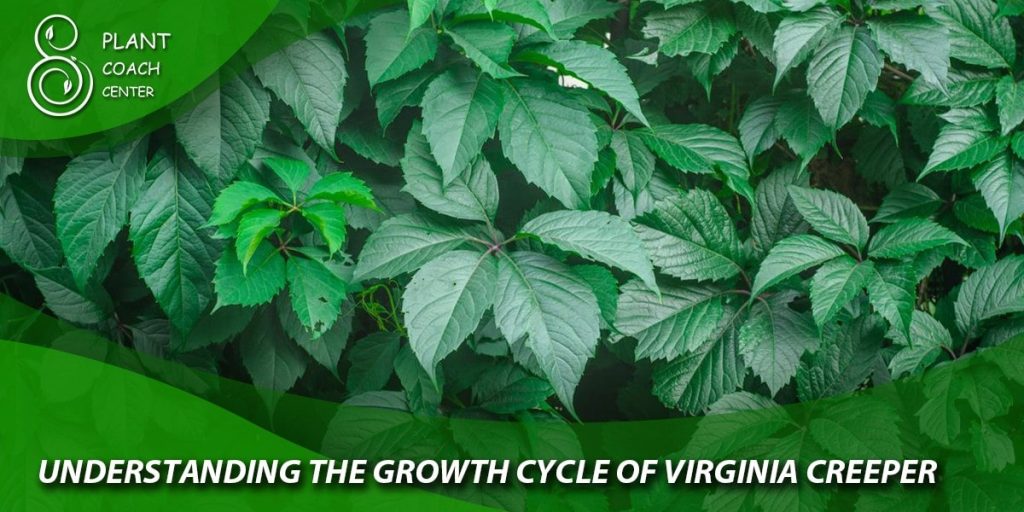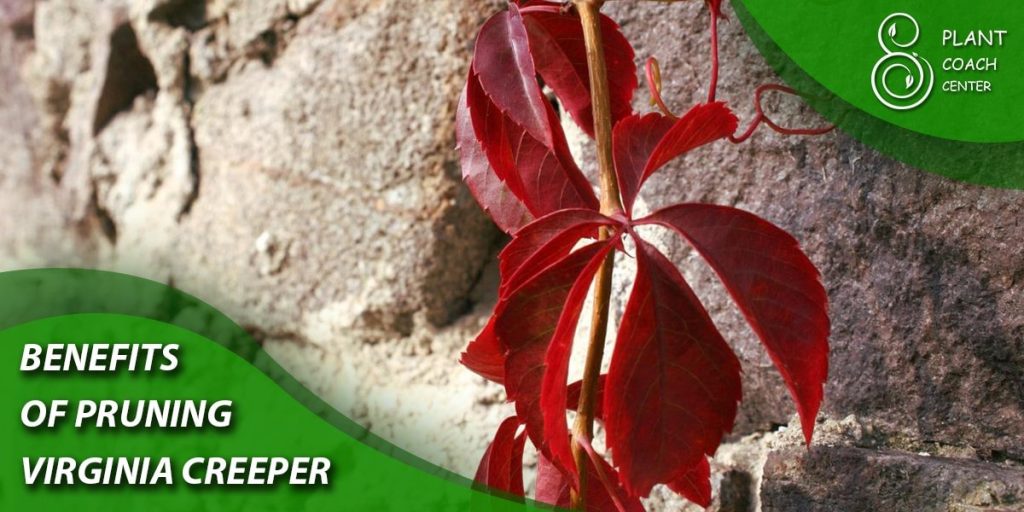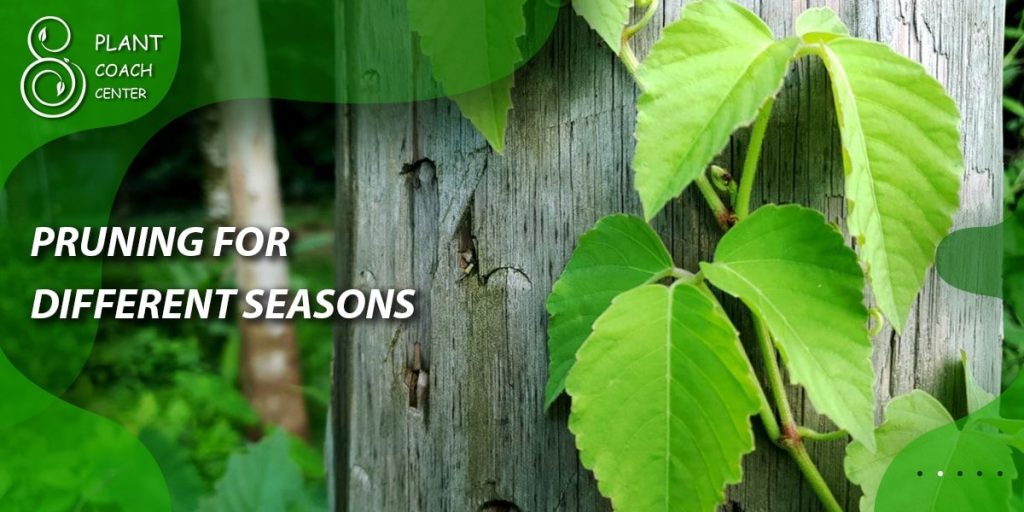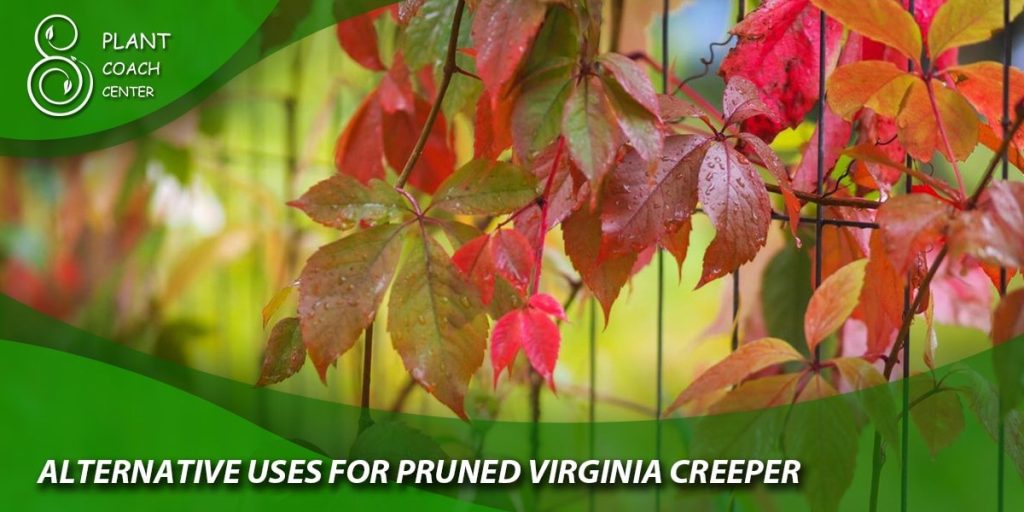When To Cut Back Virginia Creeper
Virginia Creeper (Parthenocissus quinquefolia) is a versatile and fast-growing deciduous vine native to North America. This plant has become a favorite among gardeners and nature enthusiasts with its lush foliage and vibrant autumn colors. This comprehensive guide will explore the proper techniques for pruning Virginia Creeper to ensure its health, aesthetics, and coexistence with other plants.

Understanding the Growth Cycle of Virginia Creeper
Spring Growth
As the warmth of spring returns, Virginia Creeper bursts forth with new leaves and tendrils. This period marks the beginning of its annual growth cycle, setting the stage for a vibrant and lush display throughout the growing season.
Summer Growth and Vigorous Expansion
During the summer, Virginia Creeper enters a rapid growth and expansion phase. Its tenacious vines grasp onto surfaces and structures, often scaling walls and fences in search of sunlight.
Fall Foliage and Color Changes
One of the most remarkable features of Virginia Creeper is its autumn transformation. The leaves turn brilliant shades of red, orange, and yellow, creating a stunning spectacle that adds a touch of magic to any landscape.
Winter Dormancy and Preparation for Pruning
As winter approaches, Virginia Creeper prepares for dormancy. The leaves fall, revealing the intricate vine structure. This dormant phase sets the stage for strategic pruning to optimize the plant’s growth in the following season.
Signs It’s Time to Cut Back Virginia Creeper
Pruning is a vital horticultural practice that involves selectively removing specific plant parts to promote its health, shape, and overall growth. Here are the signs to look for:
Visual Cues of Overgrowth
Virginia Creeper is a fast-growing vine, and it can become dense and tangled when left unchecked. Overgrown vines may obscure windows, doors, or other structures, obstructing light and views. Suppose you notice that the plant’s growth is impeding the aesthetics of your garden or the functionality of nearby structures. In that case, it’s a clear sign that pruning is needed.
Encroaching on Structures and Other Plants
Virginia Creeper is a vigorous climber. It can rapidly scale walls, fences, or other structures. While it’s lovely to see the plant covering vertical surfaces, it can become problematic when it invades and damages structures. If the vine is encroaching on buildings or neighboring plants, it’s time to trim it back to prevent further issues.
Effects on Building Facades and Walls
Untamed Virginia Creeper can cause problems for the surfaces it clings to. Its clinging aerial roots can hold onto moisture against walls, which might lead to mold or mildew growth, potentially damaging the facade or causing structural concerns. Regular pruning helps manage the plant’s growth and prevents it from causing structural damage.
Potential Risks and Safety Concerns
Overgrown Virginia Creeper can create safety hazards by obstructing pathways, walkways, or entrances. Additionally, dense foliage might provide hiding spots for pests or reduce visibility, making the area less safe. Trimming the plant back will mitigate these risks and keep your garden safe and accessible.
It’s essential to be proactive about pruning Virginia Creeper to prevent these issues from escalating. Regular maintenance pruning will help you manage the plant’s growth, maintain a tidy appearance, and prevent it from overwhelming other parts of your garden. By recognizing the signs and acting accordingly, you can strike a balance between enjoying the beauty of the vine and keeping it in check to preserve the overall health and aesthetics of your landscape.

Benefits of Pruning Virginia Creeper
Pruning Virginia Creeper offers several significant benefits, both in terms of the plant’s health and aesthetics and its interaction with the surrounding environment. Let’s explore these benefits in more detail:
Encouraging Healthy Growth
Pruning is essential for the overall health of Virginia Creeper. Removing dead, diseased, or damaged branches creates space for new growth to emerge. This selective cutting stimulates the plant to divert its energy into producing fresh shoots and foliage, resulting in a healthier and more robust vine.
Promoting Aesthetic Appeal
Proper pruning enhances the visual appeal of Virginia Creeper. A well-maintained plant looks neat, tidy, and attractive in your garden or landscape. Pruning can help maintain the desired shape of the vine, prevent a wild and unkempt appearance, and contribute to the overall beauty of your outdoor space.
Enhancing Foliage Color
Virginia Creeper is renowned for its spectacular fall foliage, which transforms into brilliant shades of red, orange, and yellow. Pruning can improve the intensity and vibrancy of these colors by allowing better sunlight penetration to the leaves. A well-pruned vine will exhibit more vivid autumnal hues, enhancing the seasonal display.
Controlling Invasive Behavior
Virginia Creeper is a vigorous grower; without pruning, it can become invasive, overtaking nearby plants and structures. Regularly trimming back the vine allows you to manage its growth and prevent it from overpowering other plants or encroaching on buildings, fences, or other valuable elements in your garden.
Optimizing Climbing and Support Structures
Pruning ensures that Virginia Creeper remains well-behaved on its support structures, such as trellises, arbors, or walls. Trained and guided growth can be more aesthetically pleasing and less likely to cause structural damage or disruption.
Improved Air Circulation and Sunlight Exposure
Dense, overgrown Virginia Creeper can hinder airflow and sunlight penetration, potentially leading to conditions favorable for fungal diseases. Pruning allows better air circulation and sunlight exposure, reducing the risk of diseases and creating a healthier environment for the plant.
Efficient Garden Maintenance
Regular pruning helps you manage the growth of Virginia Creeper more efficiently. By staying on top of pruning tasks, you prevent the need for more drastic cuts later on and ensure that the plant remains within the desired boundaries, saving time and effort in the long run.
Overall, pruning Virginia Creeper is a proactive and beneficial practice that maintains the plant’s health, enhances its visual appeal, and fosters its coexistence with other elements in your garden. By understanding the advantages of proper pruning, you can cultivate a thriving and aesthetically pleasing Virginia Creeper vine in your outdoor space.
Best Practices for Pruning Virginia Creeper
Tools and Equipment Needed
Before embarking on pruning, gather the necessary tools: sharp bypass pruners, loppers for thicker branches, pruning saw for more substantial cuts, sturdy gloves, and safety goggles.
Timing and Frequency of Pruning
The timing of pruning depends on your specific goals. Late winter or early spring, while the plant is dormant, is an ideal time for structural pruning. Light maintenance pruning can be performed throughout the growing season as needed.
Preparing the Plant for Pruning
Inspect the Virginia Creeper for any signs of disease or pests. Remove any affected or infested branches before proceeding. Ensure your tools are clean and sanitized to prevent the spread of pathogens.
Techniques for Proper Pruning
Utilize selective pruning techniques to shape and manage the growth of Virginia Creeper. Make clean, angled cuts just above a leaf node or bud. Remove entire branches or stems back to the main branch or the plant’s base.
Step-by-Step Guide to Pruning Virginia Creeper
- Assessing the Plant’s Condition: Observe the overall health and growth of the Virginia Creeper. Identify areas of overgrowth, dead or damaged branches, and potential structural concerns.
- Selecting the Appropriate Pruning Method: Determine the extent required. Decide whether you need to perform structural pruning, light maintenance pruning, or both.
- Identifying and Removing Diseased or Damaged Growth: Inspect the plant carefully, looking for signs of disease, such as discolored or wilted leaves, and remove affected portions to prevent the spread of infection.
- Trimming Overgrown Areas: Focus on sections where the vine has become excessively dense or tangled. Remove some of the growth, thinning it out for better air circulation and sunlight penetration.
- Shaping and Controlling Growth: Trim back long, unruly shoots to promote a more compact and tidy appearance. Guide the vine to grow in the desired direction by training it along supports or trellises.

Pruning for Different Seasons
Pruning Virginia Creeper at different seasons is a strategic approach to managing its growth and optimizing its health and appearance throughout the year. Each season offers specific benefits and challenges for pruning, and understanding the timing and techniques for each period is crucial. Let’s explore pruning for different seasons:
Spring Pruning: Preparing for New Growth
Early spring, just before the plant begins to leaf out, is an ideal time for structural pruning. This is when you should focus on removing any dead, damaged, or weak branches. By doing so, you encourage the plant to allocate its resources to new, healthy growth, setting the stage for a vibrant, growing season.
Techniques for Spring Pruning:
- Identify any winter-damaged or diseased branches and remove them at their point of origin or back to healthy wood.
- Trim back branches that show signs of weakness or are crossing each other, promoting a more balanced structure.
Summer Pruning: Controlling Vigorous Expansion
Virginia Creeper enters a phase of rapid growth and vigorous expansion during the summer months. Light maintenance pruning can be done during this time to manage the plant’s growth and prevent it from overtaking nearby structures or other plants.
Techniques for Summer Pruning:
- Trim back overreaching branches that encroach on windows, doors, or other structures, ensuring they are not causing damage or obstructing access.
- Remove any branches interfering with other plants or impeding their growth.
Fall Pruning: Enhancing Fall Color and Dormancy Preparation
Late fall, after the leaves have dropped, is an excellent time for light pruning to enhance the display of fall colors and prepare the plant for the dormant season. Removing any remaining dead foliage promotes a healthier and cleaner appearance during the winter months.
Techniques for Fall Pruning:
- Remove any dead leaves clinging to the vine after autumn foliage has fallen.
- Consider trimming back excessively long or unruly shoots to maintain a neater appearance during the winter.
Winter Pruning: Addressing Dormant Season Needs
When the plant is dormant, winter is an opportune time for major structural pruning. Without the leaves obstructing your view, you can better assess the vine’s overall structure and make more substantial cuts.
Techniques for Winter Pruning:
- Evaluate the plant’s overall form and shape, removing large, crossed, or rubbing branches.
- Prune back vines that have overgrown their supports or encroached on nearby structures.
Remember, while pruning during winter is advantageous for structural work, avoiding pruning during freezing temperatures or when frost is present is crucial. Pruning during extreme cold can cause additional stress to the plant and inhibit its ability to heal properly.
By adopting the appropriate pruning practices for different seasons, you can effectively manage the growth and appearance of Virginia Creeper throughout the year, ensuring a healthy, attractive, and well-maintained vine in your garden.

Potential Problems and Mistakes to Avoid
Over-Pruning vs. Under-Pruning
Strive for a balanced approach to pruning. Over-pruning can weaken the plant while under-pruning may lead to excessive growth and encroachment.
Damaging the Plant During Pruning
Make clean, precise cuts to avoid causing unnecessary harm to the plant. Improper cuts can invite disease or inhibit the plant’s ability to heal.
Incorrect Timing of Pruning
Perform pruning tasks during the appropriate seasons to ensure optimal results. Pruning at the wrong time can disrupt the growth cycle and impact the plant’s health and performance.
Dealing with Pests and Diseases
Regularly inspect the Virginia Creeper for signs of pests or diseases. Promptly address any issues by implementing appropriate control measures or seeking professional assistance.
Virginia Creeper Care and Maintenance Tips
Soil and Sunlight Requirements
Virginia Creeper thrives in well-draining soil with a slightly acidic to neutral pH. It prefers full to partial sun exposure, though it can tolerate some shade. Adequate sunlight ensures healthy growth and vibrant foliage colors.
Watering Practices
Established Virginia Creeper is moderately drought-tolerant. However, consistent watering during dry spells is essential, especially during the first year after planting. Water deeply and avoid waterlogging the soil.
Fertilizing Guidelines
Generally, Virginia Creeper doesn’t require heavy fertilization. However, a balanced, slow-release fertilizer can be applied in early spring if the plant appears lackluster or slow-growing.
Supporting the Plant’s Growth
Provide a sturdy trellis, arbor, or other support for Virginia Creeper to climb on. As it grows, guide the tendrils to attach securely, but avoid letting it become overly invasive on structures you wish to preserve.
Virginia Creeper and Its Interaction with Other Plants
Companion Planting Options
Integrate Virginia Creeper with compatible companion plants to enhance the aesthetics and biodiversity of your garden. Consider planting it alongside clematis, climbing roses, or other non-invasive vines.
Plants to Avoid Growing Near Virginia Creeper
Avoid planting Virginia Creeper near valuable or delicate plants that may be overshadowed or overwhelmed by its vigorous growth. Also, be cautious about introducing it close to structures vulnerable to damage.

Alternative Uses for Pruned Virginia Creeper
Composting and Organic Recycling
Turn pruned Virginia Creeper into valuable compost to enrich your garden’s soil. As an organic material, it breaks down readily, contributing nutrients and improving soil structure.
Craft and DIY Projects
Get creative with the pruned vines! Virginia Creeper can be woven into decorative wreaths, used as natural, eco-friendly plant supports, or fashioned into garden ornaments.
Wildlife Benefits
Pruned vine cuttings can serve as nesting material for birds and shelter for small wildlife. Incorporating pruned materials into your garden provides ecological benefits to local fauna.
Conclusion
Virginia Creeper is a remarkable plant that brings beauty and charm to any landscape. By understanding its growth cycle and following proper pruning practices, you can ensure the health and longevity of this versatile vine.
Remember to periodically assess its condition, make timely cuts, and guide its growth to enjoy the best Virginia Creeper offers from its lush spring foliage to its breathtaking autumn colors. With the knowledge gained from this comprehensive guide, you’ll confidently navigate the art of plant coaching and successfully manage your Virginia Creeper to thrive in harmony with nature and your garden. Happy gardening!
When is the best time to prune Virginia Creeper?
Early spring or late fall.
How often should I prune Virginia Creeper?
Regularly, as needed, to control growth.
Will pruning harm my Virginia Creeper?
Proper pruning promotes healthier growth.







